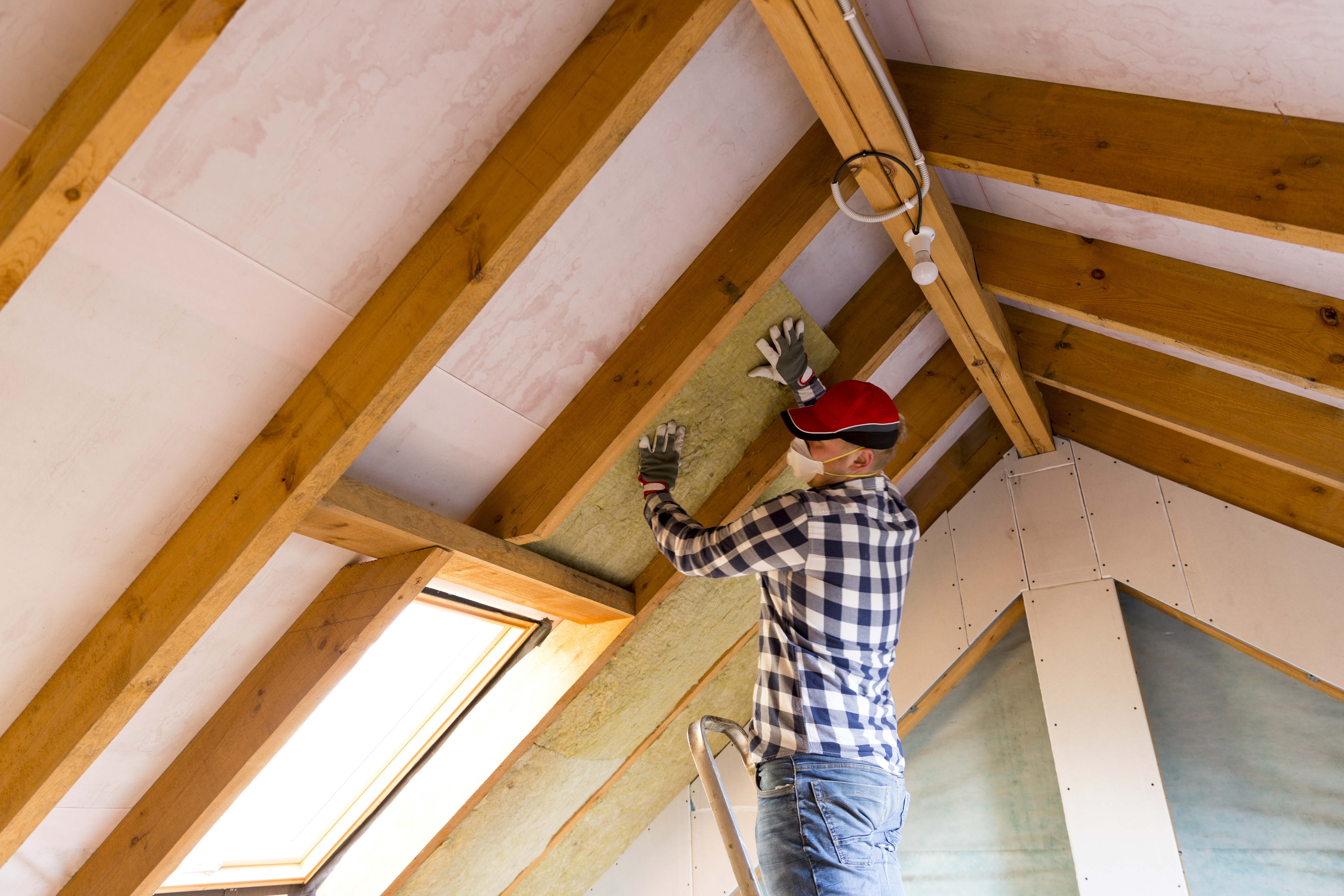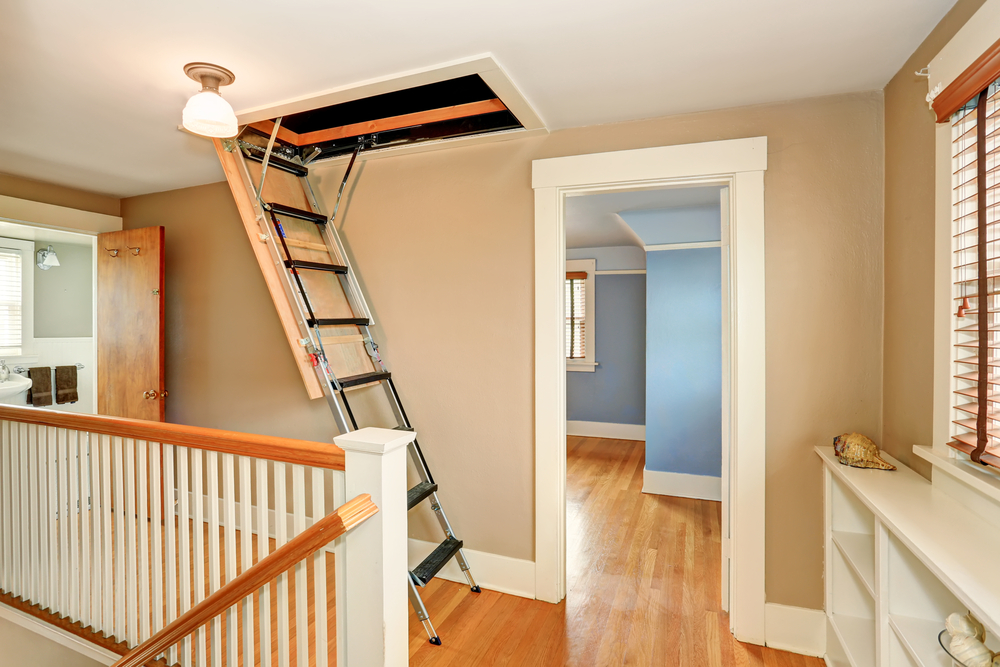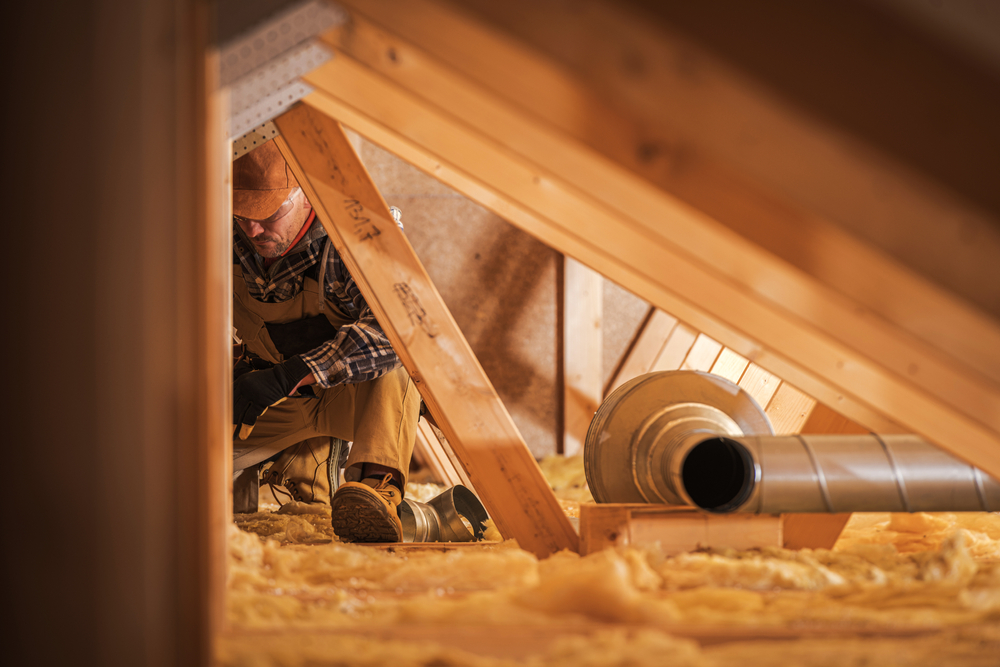Cool Attic: 4 Ways to Cool Down Your Attic

Keeping your attic cool is one of the most important aspects of properly regulating the temperature in your house. So, how do you do that? Factors like airflow and insulation are the keys to cool attics. Otherwise, hot air collecting in the attic makes its way into the rest of your home, which isn’t ideal. Not only is it uncomfortable, but it can drive air conditioning costs through the roof.
If you have a situation where heat is accumulating in your attic and raising the temperature of your home, you probably want to address this problem as quickly as possible—especially in the warmer months. Use this guide for several tips on how to cool your attic and keep your home more comfortable throughout the year. To learn more about why attics retain so much heat, how to keep your attic cool, and how to afford these upgrades, keep reading.
Why Do Attics Retain So Much Heat?
If you have an attic, you should know that it serves an important role in keeping your home cool. However, many homeowners find themselves frustrated when their attic seems to be part of the problem and their house becomes impossible to cool down without running the air conditioning all the time.
Attics tend to heat up quickly because they are the top-most point of your home’s interior. Since they are directly below the roof, which absorbs a lot of heat from the sun throughout the day, attics warm up due to heat transfer. One crucial thing to know is that attics are often significantly hotter than the temperature outside, and can exceed 100 degrees if not adequately ventilated.
And, without anywhere to go, that hot air collects and radiates into your home, raising temperatures inside your living space. But what causes the attic to retain that air and overheat?
There are several factors that can contribute to attics retaining a great deal of heat, such as:
- Lack of insulation: Without sufficient insulation, your attic is free to absorb and hold a lot of heat.
- Poor ventilation: Attic ventilation usually falls short, even if your house is a newer build. However, good ventilation is an essential component of temperature control in your home. How do you know if your attic suffers from this specific problem? If it feels stuffy or moist, or you see signs of moisture or growth, it’s a sign that your ventilation isn’t up to par.
- Roof is absorbing too much heat: Since the roofing is directly above the attic, it can play a role in heating it up. Both the color—specifically dark colors—and the materials can cause your roof to draw and hold onto more heat, which can then transfer into the attic.
These aspects of your roof and attic construction play a large role in heat retention. However, there are several ways you can overcome these issues and cool down your attic.
What Happens If Your Attic Gets Too Hot?

When your attic gets overheated, it can be very difficult to cool down. That hot air gathers and expands into the living space, making your home uncomfortable.
But what happens when the hot air is collecting in the attic? It can take a toll on your roofing materials, causing them to deteriorate at a faster rate. Additionally, excessive heat can cause an increase in moisture, which may damage your stored items over time.
The longer the problems are allowed to persist, the greater your risk of damage. To tackle the issue head-on, you should look into ways to cool down your attic as soon as possible.
What Are Some Ways to Keep Your Attic Cool?
If you are struggling with an overly hot attic, it is not something you are doomed to endure. Here are some of the best ways to cool your attic and keep your home a more comfortable temperature year-round:
- Updated insulation: One of the first things you should do is check the quality of your insulation. In some cases, you may have little-to-no insulation, which means it will need to be supplemented. This step is crucial in improving your home insulation overall and controlling how heat collects and spreads. You can use fiberglass or rigid foam for your attic insulation.
- Attic fans: An attic fan can help with air circulation. When running these fans, the hot air can be pushed out, and cooler air can be brought in, effectively bringing down the temperature.
- Passive vents: Passive vents help with natural cooling by creating an opening where air can flow in and out of the attic. Ridge vents, a type of passive vent, can be placed at the peak of your roof to improve vertical ventilation.
- Cool roofs: As we mentioned, your roof absorbs heat from the sun all day. This heat can transfer into the attic directly below, contributing to the problem. To help reduce how much heat your roof absorbs, you can invest in a cool roof, which reflects the sun away from the home. There are several cool roofing methods you can implement—from using a light-colored, paint-like coating on your shingles, to innovative reflective shingles specifically designed for this purpose.
All of these methods can effectively lower the temperature within your attic and reduce the demands on your air conditioning.

Can You Keep Your Attic Cool in the Summer?
Cooling your home in the summer can be difficult, especially if you live somewhere that reaches temperatures over the 100s. However, by implementing one or all of the ways to make your attic more energy-efficient mentioned above, you can keep your attic cooler throughout the year, even during the hottest months.
By lowering the temperature of your attic and reducing the amount of hot air that is forced into your living space, you’ll be able to reduce the strain on your HVAC system, saving money on your electric bill during these typically expensive months. While these upgrades for a cool attic come at a cost, the amount you save over time by cooling your home is well worth the investment.
Affording Attic Upgrades
Making updates to your home can be costly, but fortunately, PACE financing can help make it possible. PACE financing covers a range of improvements that help you improve your energy efficiency through upgrades like ventilation fixtures and better insulation.
PACE financing provides the funds you need up-front to make renovations, but it’s not a loan. Instead, it’s a property assessment, meaning that the financing is tied to your property (rather than the owner) and is paid along with your property taxes.
Here are just a few of the reasons you should consider financing to complete projects to cool your attic:
- Approval is not based on your credit score. Instead, it’s based on home equity
- Low, fixed interest rates are available
- You can spread the cost over the life of the upgrade (up to 30 years)
- Payments are convenient; simply pay them when your property taxes are due, whether that’s annually or semi-annually
Get Started on Your Attic Project
Now that you know how to cool down your attic, time is of the essence. Figuring out how to cool your attic now will save you substantially in the long run. To help you make these updates as soon as possible, apply for Ygrene PACE financing today and determine if you qualify. That way, you don’t have to worry about the limitations of your budget and you can get started on your project right away. Hopefully, you find the solution to your attic problem and enjoy a much more comfortable summer at home.




